- Home
- Adam Roberts
Adam Robots: Short Stories Page 11
Adam Robots: Short Stories Read online
Page 11
And so 2019 turned into 2020, and 2020 into 2021, and people could talk to one another from any time from 2004 to 2038, but nobody built the super long cabling that would have enabled the technicians to get clear neutroelectron signals that reached further back in time than 2004, to get internet access from the past and into the future. There seemed little point.
~ * ~
3
A phone rings.
The phone is shaped something like a tapered loaf, cast from blood-brown plastic, with a broad steel ring like a buckle on the front that is rimmed with little circular holes. The receiver, boneshaped, shivers in its cradle in time to the rings. The bell is a mechanical bell, located inside the hollow body of the thing, so that, ringing, it vibrates the whole device a little bit. The receiver is connected to the body of the phone with a brown flex, a flex which had come from the manufacturer curled as precisely as DNA, but which now is gnarled and knotted, unwound in places, scrunched up in others.
The phone sits by the wall on a shelf in a small kitchen area. You might, perhaps, describe the area as a kitchenette. Against the west wall there is a unit containing a small sink, and next to it a dwarf-fridge on a shelf, with a kettle on top of it, and next to that a two-ring hob. On the south wall at tummy-height is a shelf upon which storage jars of coffee and of tea and of sugar, and three mugs, stand next to the phone. A door in the east wall; the north wall decorated with a poster for the film Gladiator. Somebody has pasted a photocopy of the face of an individual called Vernon St Lucia over the face of the star of the film, the humour of this gesture deriving from the ironic contrast between the muscular good looks of the film star and the weedy, querulous nature of St Lucia, who has authority over the three laboratory technicians who work here.
Only one of these technicians is in the building. It is shortly after seven o’clock in the evening, and everybody else has gone home for the night. The single technician remaining is called Roger. He comes through to the kitchenette.
The penetrating chirrup of the phone-bell stops.
‘Extension three-five-one-one?’
A rainy, white-noise sound, overlaid with a rhythmic distant thudding, and behind it, as if very far away, a tinny vocalisation, or singsong, or whistling. But no words.
‘Hello?’ says Roger. ‘Hello?’
The hissing swells and subsides like surf, the crackles pop more frequently. The oo-aa-ooing in the background might be words: ‘. . . couldn’t get through earlier . . .’
‘Hello? The connection,’ Roger says, ‘is not good.’
Crunching and flushing noises, and then sudden clarity: ‘. . . imperative that we get a message through . . .’ but then, with a swinging, horn-like miaow the line dissipates into static.
‘Hello? This is a very bad line.’
Nothing but noise.
Roger replaces the receiver in its cradle. He meanders back to his desk and switches on a light. He cannot decide whether to go home or not. There is nothing for him at home this evening. His girlfriend, a woman called Stella, is having a girls’ night out with four friends. These friends’ names are Susan, Susan, Miranda and Belle. He doesn’t fancy going back to an empty flat. But the prospect of staying at the lab and working on into the evening is not appealing either. His brain feels muffled, fuzzy. He can’t concentrate on his job-in-hand.
He mooches back into kitchen and turns the kettle on. He inspects one of the mugs standing beside the telephone, and, fussily, runs a finger inside the rim. Behind him, the kettle’s spout turns into a miniature chimney. Steam pillows out.
Roger changes his mind. He drinks, he tells himself, too much coffee anyway. Six or seven mugs, most days, and strong stuff too.
He walks back to his bench and turns the anglepoise off.
The phone goes again.
As he shuffles back to the kitchen to answer it, he finds himself thinking how annoying the sound of a phone ringing is. How insistent. A mechanical baby’s cry that is almost impossible to ignore. He resents it.
‘ ‘tension three-five-one-un?’
This time the voice is clearer, although the static is still thorny and distracting. ‘Please don’t hang up! It’s vital you listen to . . . information we have to give you.’ The sentence is broken in half by a crack, like a plank breaking.
‘I’m sorry,’ says Roger, annoyed rather than intrigued. ‘Who were you trying to reach?’
‘The institute . . .’ A whoosh and a clatter drown the rest of the sentence.
‘I’ll tell you what you’ve done,’ says Roger, prissily. ‘You’ve dialled the one twice by mistake. You want extension three five one seven, but your finger has accidentally pushed the one twice and it’s put you through here. There’s nobody here except me, and I’m about to go home. Three five one seven will get you the night secretary.’
‘No! No!’ The panic in the person’s voice is evident enough to break through the hisses and spatters of interference. ‘Please don’t hang up. We’re calling as far back as we can, and the boundary withdraws all the time, one second per second. In a very little time it will be too late. Do you understand?’
‘No,’ says Roger, crossly, ‘I don’t.’
‘I can’t stress too greatly, your future is at stake. All our futures. The people much further along the line from us have only just encountered the disaster, and they have called us, and we have called you. This may sound strange to you. The chance to change things ... it must happen there, in your time. It’s got to be, you.’
‘I have no idea what you are on about,’ says Roger. ‘Is this a prank? Is this Seb?’ This, he thinks, is exactly the sort of practical joke that Seb would try.
‘Please, no, just listen. You don’t have to believe me, it doesn’t matter if you believe me, the thing you have to do is so simple, so simple it won’t take you a moment. All you have to do . . .’
But Roger has put the phone down again. He stands looking at the kettle for a moment, his mind floating free. He thinks of Seb, a man he has never really liked. By a chain of association too oblique to be represented here with any ease, he thinks of a holiday in France, and then of another friend, and then of Stella, and finally of Susan, one of Stella’s friends. He and Susan had kissed the previous week, but both had pulled away, startled, before things had proceeded any further. It had been at a party at another friend’s house, at the bottom of their garden away from everybody, in the darkness. Two cigarette smokers underneath the stars, the noise and chatter and muffled music of the party sounding very far away. Kissing, and then pulling away. The path not taken. But then again, who knows? It wouldn’t be a good idea to tell Stella. He feels sure Susan thinks this too. Best not mention it at all, and certainly not tell Stella.
He puts on his coat, and is about to lock up the lab when the phone rings again.
<
~ * ~
Review: Thomas Hodgkin,
Denis Bayle: a Life
(Red Rocket Books 2003), 321 pp.
£20. ISBN: 724381 129524
This is a novel with an interesting conceit, written by a newcomer to SF (although according to Hodgkin’s own author bio, he has published a number of mainstream novels). The book takes the form of a biography, complete with preface, scholarly apparatus, timeline and everything else. The subject of the story is a fictional Science Fiction author, the Denis Bayle of the title, but the point of the book is less to tell a life story (Hodgkin doesn’t give Bayle that interesting a life): rather Hodgkin uses this format as an excuse to offload a dozen imaginary novels, supposedly written by Bayle, and here summarised in so much detail that it would be a trivial business using these blueprints to actually write the fiction. In effect, then, what we have here is not so much a novel as a collection of Imaginary Books, condensed for the reader’s convenience. What Hodgkin brings to this now venerable literary genre is a linking narrative, a single imaginary author.
He tells Bayle’s story well - not flashi
ly, but convincingly. Born in New York to a French mother and American father in 1929, he was too young to serve in the Second World War, but just the right age to experience the 1950s explosion of interest in SF. His first story appeared in Fables of Science and Wonder in 1948 (for Hodgkin has not only invented Bayle, and invented his dozen novels and two-dozen stories, he has also invented all the magazines in which he was published, all the editors he dealt with and so on. Indeed, this reviewer found himself wondering why he could not simply have included John Campbell and the others as minor characters). ‘FSW,’ Hodgkin says, a little po-faced, ‘was the market leader throughout the early 1950s’. Bayle’s first story ‘Volcano Skyscraper’ was ‘a superheated adventure novella, in which a huge chimney is being constructed atop an active volcano to harness and control the destructive forces of nature in the service of mankind. The frequent disasters, and the heroics of the construction crew, are vividly if rather gnashingly rendered’.
Throughout the 1950s Bayle worked in a Jersey company that manufactured alarm clocks (‘it is perhaps strange,’ says Hodgkin, ‘that so few of Bayle’s stories concern clocks’; which is something of a cheat, surely - Bayle only wrote so few clock stories because Hodgkin decided that he would write only a few clock stories, which means it can hardly strike him as strange in any genuine sense. But I am digressing.). He married in 1954, and had two children. The elder of these died of polio at the age of seven. This death provoked an estrangement between Bayle and his wife, ‘neither of them able to deal with the grief, neither of them taking consolation in the other’. 1964, the year that Bayle became a professional writer, was also the year of his separation from his wife.
Thereafter he lived by himself in Queens, and later in Lower East Side, and devoted himself to his writing. ‘His writing, whilst always inventive and popular, was nevertheless touched with a flavour of melancholy, a sense of the separateness and isolation of the human condition. It is possible that this, in fact, endeared him to many SF fans, for whom, then as now, it is a familiar condition’.
But, as I say, the meat of this book is not really in its retelling of Bayle’s life, except incidentally. The real purpose of Denis Bayle: a Life is to shoe-horn in a large number of imaginary books, fictional plot-lines, made-up SF premises. Whether these are ideas that Hodgkin is too idle to write up for himself, or ideas he has abandoned as unworkable, is not clear. We’re familiar, of course, with the ‘Imaginary Review’ from the work of Borges and Stanislaw Lem. It is an approach I have always found fairly annoying - some of these ideas are quite good, and sketching them out in this desultory manner precludes another writer from developing them properly. But that is by the bye.
One advantage Hodgkin’s format has over the more conventional ‘collection of reviews of imaginary books’ is that he need not pretend the reviewer’s reticence about twist-endings, plot spoilers and so on. Because he is supposed to be writing a ‘critical biography’ he is able to précis his novels in detail from start to finish, which makes for more satisfying reading. So, for example, his account of Bayle’s novel Sparkler (1970) reveals not only premise but twist. The ‘sparklers’ of the title are black hole bombs. The FTL of Bayle’s Space-Operatic future is a technology that distorts space-time, stretching several of the key constraints of reality. As a spin-off of her research, an eminent light-speed scientist called Gabriele Anna invents a way of reorienting the vector gravity. Instead of acting at ninety-degrees to matter (such as our experience of gravity on this clump of matter called the Earth, where gravity pulls everything towards the centre of the globe, and sticks us to the surface) she is able to flip the vector by ninety-degrees. Bombs are built which insert ‘grav-virus’ into black holes, a ‘fractal replicant that catastrophically reconfigures the vector of gravity’. This reconfiguration lasts only seconds, but that’s all that’s needed. Dropped into the sheer gravity well of a black hole, these probes liberate all the matter and all the energy that is squashed into these awesome cosmic phenomena. Much of the novel maps out the strategy and tactics of the space war (fought between ‘Realist’ and ‘Constructivist’ populations of humans; there are no aliens). Bayle, Hodgkin claims, ‘evokes the military milieu well, despite his own lack of wartime experience’ and also ‘does a good job of evoking an appropriate sense of wonder’. I suppose we’ll have to take his word for that.
Because gravity is shifted, momently, through ninety-degrees, the holding force of the black hole disappears. It spins out like a gigantic cosmic Catherine wheel, spitting matter and light in huge expanding corona. This matter travels with such force and speed - because the pressures that had been squashing it to a less-than-atom-pinhead were so vast - that it distorts, it approaches light speed, it expands relativistically. Anything within several light years will be obliterated - enemy fleets, stations, planets, stars.
A plot strand deploys that SF cliche, the future archaeologist: in this case ‘light-archaeologists’ - not people grubbing around in the dust of ancient ruins, but people painstakingly sifting through the information contained in ancient light. His main female character, Rachel Danchev, specialises in uncovering economic data about the Others, an alien race so long extinct that no physical remains have ever been found, and whose existence can only be deduced from the four-hundred-million-year-old light-shells travelling through space. As she puts it:
Turn a black-hole into a Sparkler - prise the lid from one of those things and what comes out? Matter of course, but also light, in all spectra. Intense radiation of all sorts . . . Information comes out, information that was buried in a perfectly hermetic cosmic hole for god-knows-how-long. It’s an unbelievably rich stream of data.
Rachel begins to believe that the light pouring out of the Sparkler she is studying contains within it not only the answer to the mystery of the disappearance of the Others, but answers to deeper cosmic mysteries even than that. At the end we discover that galaxies are not spiralling in towards their central black-holes, but bursting out at such titanic speeds that spacetime and causality are thrown into disarray, the remains of a war on a scale that dwarfs even the interstellar conflict with which the novel is concerned. But (a reviewer writes) this is the sort of thing that’s only going to work by building its effect via novelistic momentum. A novel written out full-length might generate the sort of sense-of-wonder Hodgkin talks about; a summary hardly can.
A better conception, I thought, was Bayle’s Troposphere (1975). In this novel aliens invade the earth but occupy not the ground (as in Wells’s War of the Worlds), nor the ocean (as in Wyndham’s The Kraken Wakes), but instead the sky, specifically that portion of the atmosphere beneath the stratosphere from which the book takes its title (‘the troposphere extends from the ground to a height that varies from nine kilometres at the poles to seventeen kilometres at the equator’ says Hodgkin, although it is not clear whether he is speaking himself or quoting from Bayle’s supposed novel). I liked the sound of this novel, and rather wished it were real so I could buy it and read it properly. The appearance of the invasion fleet first casts human society into terror, which mutates into relieved disregard when it becomes clear that the aliens have no interest in what happens at sea-level. After months of upheaval, life on earth settles easily back into its old rhythms, inconvenienced only by the aggression with which the invaders treat any sufficiently high-flying aircraft or rockets (‘destruction is assured above 1100m’). Years pass; communication is attempted many times but always ignored. The aliens are observed as they construct a complex flying-and-floating culture in the high sky. Airlines go bust. Shipping companies grow rich. People speculate about the origins and long-term intentions of the aliens. Doomsayers insist that mankind will be destroyed soon, but as years pass without incident people become complacent. Governments continue a kind of cold war against the invaders for many years, picking off occasional targets from the ground. But total war is too difficult and too expensive to wage against such an enemy, and it becomes the general belief we will simpl
y have to share our world with the invaders. ‘Eventually we will learn to speak to one another,’ says one character. ‘We must be patient.’
According to Hodgkin, ‘this premise is powerfully rendered’, although the few quotations he concocts don’t really demonstrate this power. Indeed, Bayle was instructed by his publisher that the first draft of Troposphere lacked drama, and therefore saleability. He rewrote the book, transforming the second half into a catastrophe-thriller. After nine years of relatively quiet occupation, the invaders begin to seed the lower stratosphere with ‘something - organic, or technological—’, ground-based intelligence is not sure what. It proliferates, blocking out an increasing percentage of sunlight. Famine and catastrophe for humanity looms. At last mankind must rouse itself. The story centres on three researchers at the United States Invader Studies Institute [their motto is ‘USIST - RESIST!’], racing against the clock to try and find a way to ‘settle ET’s hash’.

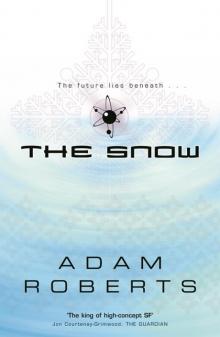 The Snow
The Snow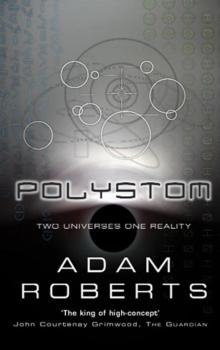 Polystom (Gollancz Sf S.)
Polystom (Gollancz Sf S.) The Parodies Collection
The Parodies Collection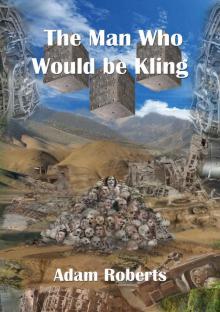 The Man Who Would Be Kling
The Man Who Would Be Kling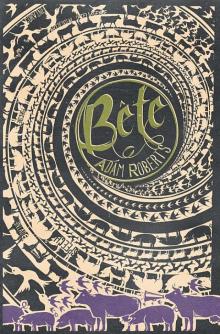 Bête
Bête The Lake Boy
The Lake Boy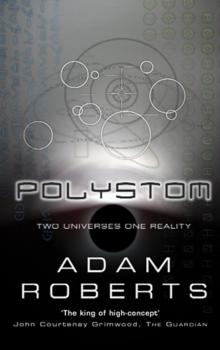 Polystom
Polystom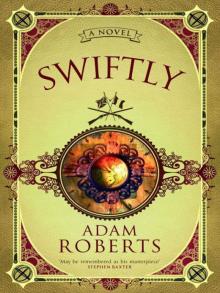 Swiftly: A Novel (GollanczF.)
Swiftly: A Novel (GollanczF.)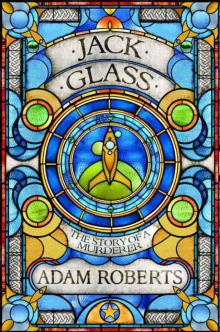 Jack Glass
Jack Glass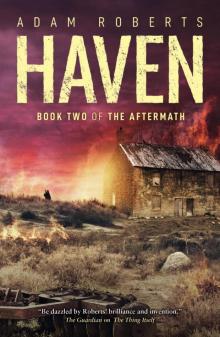 Haven
Haven The Riddles of The Hobbit
The Riddles of The Hobbit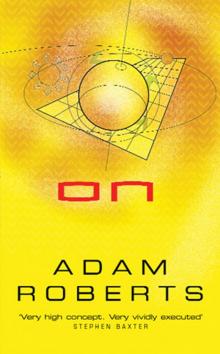 On
On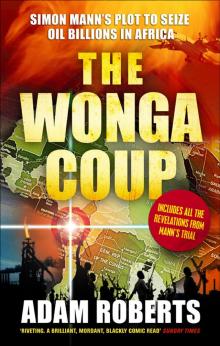 The Wonga Coup
The Wonga Coup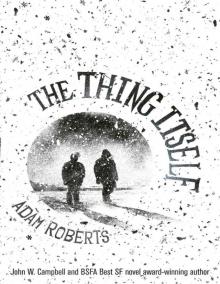 The Thing Itself
The Thing Itself Anticopernicus
Anticopernicus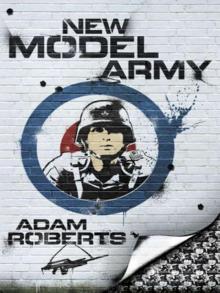 New Model Army
New Model Army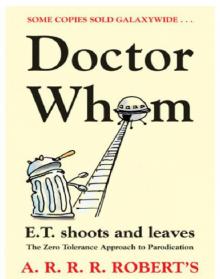 Doctor Whom or ET Shoots and Leaves: The Zero Tolerance Approach to Parodication
Doctor Whom or ET Shoots and Leaves: The Zero Tolerance Approach to Parodication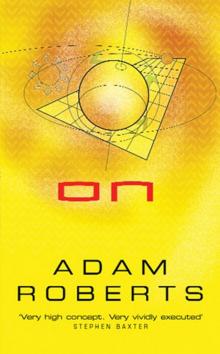 On (GollanczF.)
On (GollanczF.)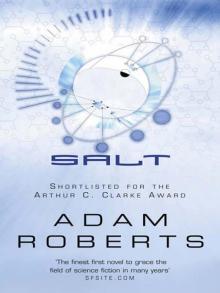 Salt
Salt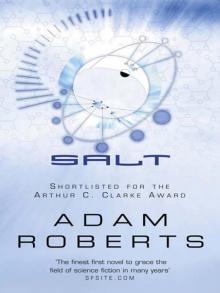 Salt (GollanczF.)
Salt (GollanczF.)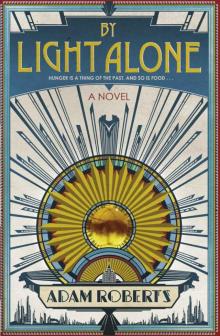 By Light Alone
By Light Alone Yellow Blue Tibia
Yellow Blue Tibia Gradisil (GollanczF.)
Gradisil (GollanczF.)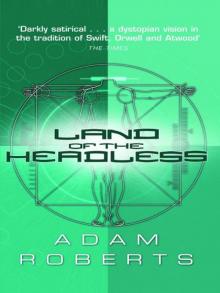 Land Of The Headless (GollanczF.)
Land Of The Headless (GollanczF.)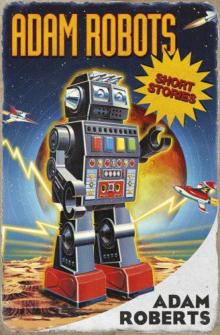 Adam Robots: Short Stories
Adam Robots: Short Stories Twenty Trillion Leagues Under the Sea
Twenty Trillion Leagues Under the Sea